A Beginner's Guide to Modelling the Broad Gaugeby Mike Flemming |
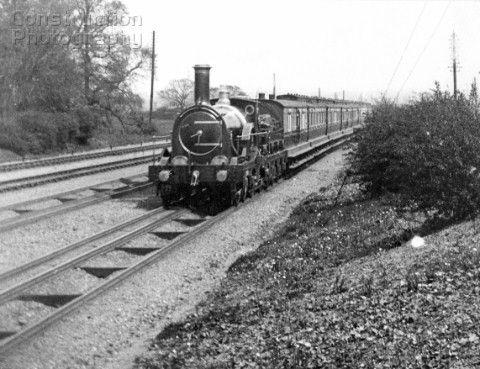 |
I must start by pointing out that my use of the term 'beginner' applies to myself as well as to any readers! I hope that my sharing of the difficulties I faced, when starting, will be useful to any other modellers thinking of trying this area of GWR modelling.
It is important to realise that almost everything about the Broad Gauge (BG) was different! Modellers will be faced immediately with the need to construct their own track. A very useful first step is to join The Broad Gauge Society (BGS), since they provide a large range of Data Sheets to members, covering matters such as track specifications, signals and other lineside features, and many items of rolling stock.
My own solution to building track is shown below. I made the timber baulks and cross-ties from wooden strips that are available from Cornwall Model Boats. Several other items in the early BG period were also similar to marine items (such as 'point capstans') and are available from model boat suppliers. The characteristic 'bridge rail' is available from the BGS, together with white-metal castings of various lineside items (in both 4mm and 7mm scales). My own modelling is in 4mm scale, for which track is usually constructed to P4 standards. The BGS supply appropriate track gauges.
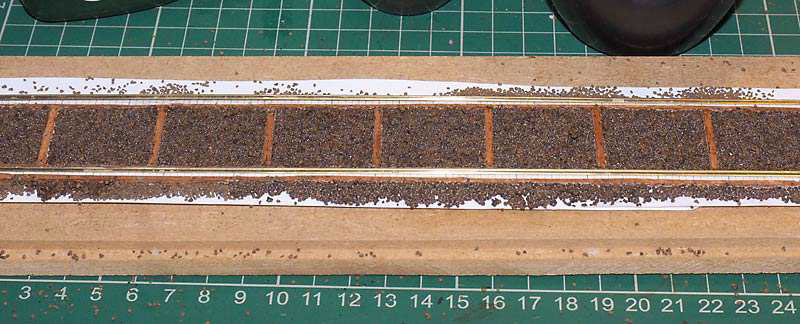
4mm scale BG track using BGS 'bridge rail' laid on wooden baulks
| Points also have to be hand-built and, in the later phase of the BG period, the adoption of 'mixed gauge' track (with an extra standard-gauge rail inside the BG formation) added its own complications. These can be studied in detail on the re-constructed BG section of track at the Didcot Railway Centre. |
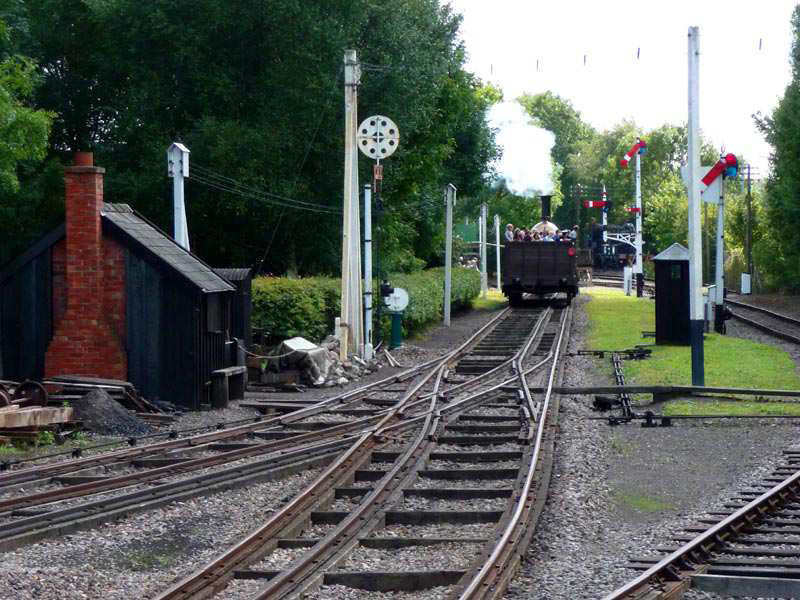
BG track and mixed gauge pointwork at Didcot Railway Centre |
The BG period on the GWR lasted from 1837 until 1892, therefore covering most of the company's history throughout the 19th century. Where rolling stock is concerned, however, there is a marked divide into two different periods. In the first period, when the BG was seen as the 'great leap forward' for all railways, the locomotives and carriages were designed to impress and to take advantage of the increased dimensions of the 7' 0¼" gauge.
It was not too long before disillusionment set in and the northern lines of the GWR were built to the standard gauge. Since 'the writing was on the wall' for the BG, very little new stock was built after the 1850s and the existing stock became more and more decrepit, although much survived until the end of the BG period. It should be remembered that, although the main line to the West Country (Devon and Cornwall) remained BG until the end, most of the rest of the system had already been converted much earlier, with the whole of Wales and other lines west of Gloucester having been converted 20 years earlier in 1872.
In the second period, some additional stock was built to support the West Country expresses but these were designed with standard gauge bodies mounted on BG bogies, to facilitate rapid conversion when the end came. An exception was the 'renewal' of several of the most iconic express engines – the famous 'Gooch' singles – which, although nominally 'rebuilds', were actually new engines constructed to the same overall designs but with some 'modern' features, such as cabs!
Otherwise, 'new' BG locomotive stock was created by mounting the wheels outside the double frames that were widely used on the GWR at that time. Thus, there were BG versions of familiar types, such as 'Armstrong' goods and 'Dean' singles, which were returned to standard gauge after 1892.
Several kits are available from the BGS to construct locomotives and rolling stock from both periods and, for many modellers, the later period is more attractive, as there are more similarities with standard gauge designs. On the other hand, for me, it is the earlier period that has greater 'character' but this also needs more research since its existence was mainly before the age of photography.
The model locomotive shown below was built from a (long unavailable) K's 'Milestones' kit of the later type of 'Gooch' single (with cab). It shows many of the typical features of BG locomotives, including the large exposed driving wheels.
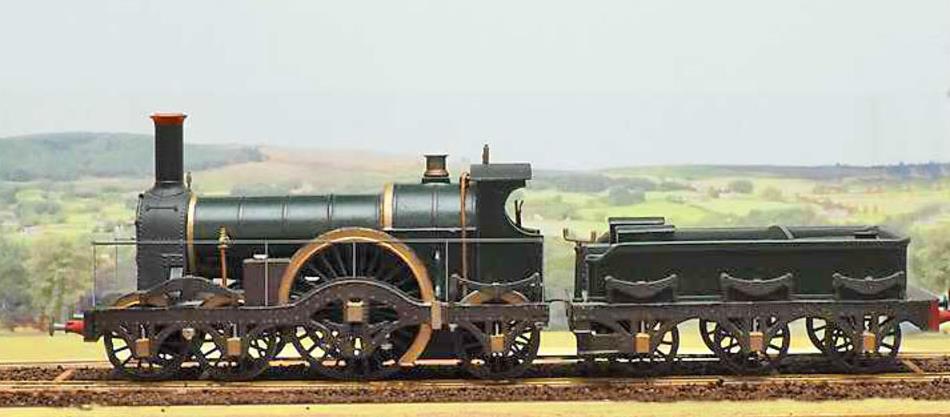
'Rover' class 4-2-2 built from a K's 'Milestones' kit
(newer kits, based on 3-D printed body shells, are now available in 4mm and 7mm scales.)
Another useful source of information about early BG operations lies within official accident reports, which often include full details of the trains that were involved. My own modelling has been based on the vehicles described in the accident report on a collision between a mail train and a cattle train near Bullo Pill on the South Wales line, in November 1868. The report describes each of the carriages and their order in the mail train and the overall configuration of the cattle train. This 4mm scale model of a Mail Carriage was built from a BGS kit (available in 4mm and 7mm scales):
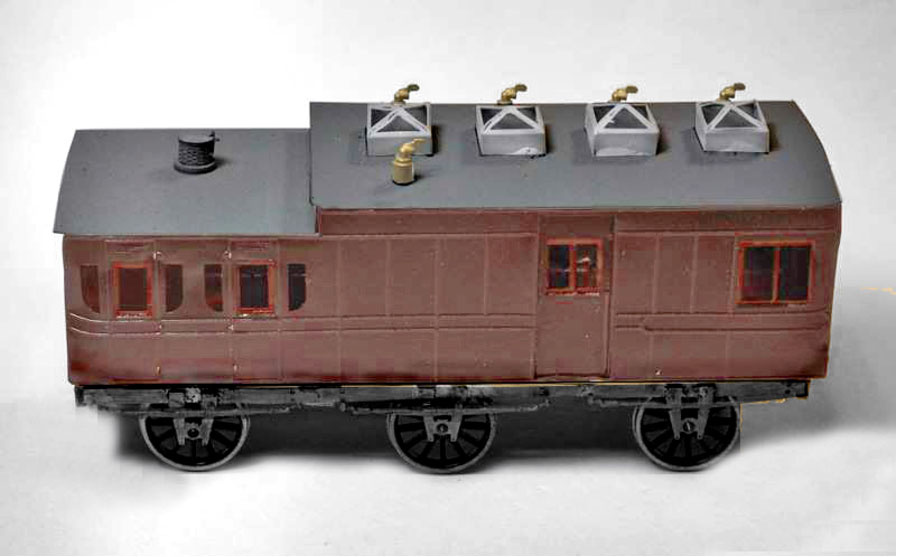
GWR Mail Carriage from a BGS 4mm scale kit
Note the many unusual features which, to me, make these early vehicles especially interesting. The skylights and ventilators on the raised roof were for the GPO sorters, working with racks of pigeonholes along the sides of the compartment. I was surprised to find that apparatus for the automatic exchange of mailbags from moving trains was introduced on the GWR as early as 1866. There were also two 2nd class compartments under the lower roof at one end – these early carriages were surprisingly low-roofed, especially when considering the prevalence of 'top hats' at that time. In fact, special cords were provided below the ceiling to hold such hats in an inverted position! Another unusual feature of several early BG 1st class carriages was that compartments were often divided longitudinally into pairs of 4-seat sub-compartments. A sliding door allowed passengers to move across the width of the train.
Note also that, in the early phase, all vehicles (for both passengers and goods) were painted brown overall. White upper panels were introduced in October 1864, when the Directors wished to 'brighten' the outside appearance of the carriages. (The 'white' became 'cream' after varnishing.) At some time, which is not known precisely, the wagon colour changed from brown to red.

Model of the complete mail train described in the Bullo Pill accident report (click on the image for a larger version)
The mail coach and luggage van were built from 4mm scale BGS kits, while the 'Rob Roy' locomotive and other carriages were scratch built. The locomotive is of traditional brass sheet construction and one especially challenging part was designing the close-fitting splashers over the exposed driving wheels. The carriages were built using 3D-printing for the sides and other components.
I have not built all 20 wagons of the goods train but have made several representative types of both open and closed cattle trucks. The unfortunate drovers travelled in a wooden 3rd class carriage at the end of the train, which was completely destroyed in the accident. The splayed sides show its origins in the humble farm cart. The earliest 3rd class 'carriages' were simply open goods trucks, fitted with cross benches. My model was constructed by 3D-printing, including the 'Losh-pattern' wheels with their characteristic curved spokes.
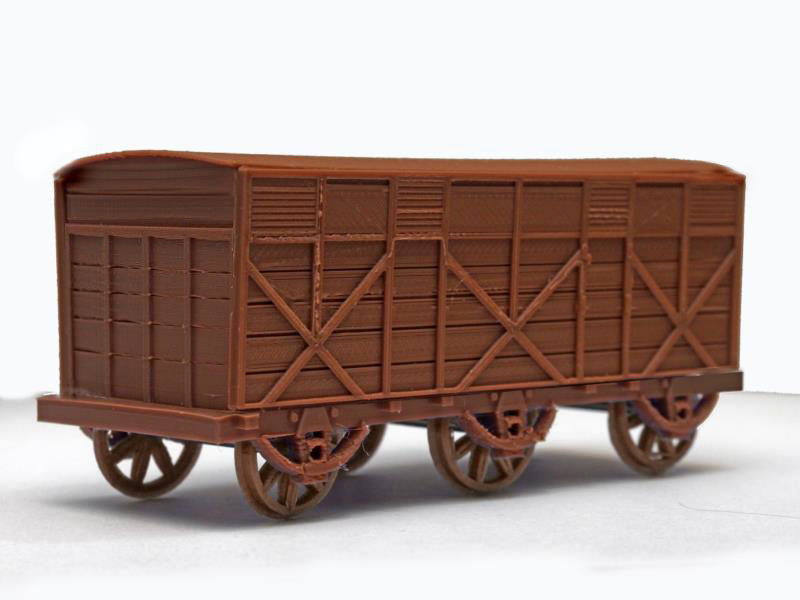
3D-printed model (including wheels) of an early BG 3rd class carriage
All my more recent models were constructed using 3D printed components. The Gooch goods locomotive 'Tantalus' has a brass boiler and chassis but the boiler cladding, together with all other detailing, was applied using 3D printed overlays. The GWR locomotive colour was different in the early days, being described as 'Holly Green' or dark blue-green.
Other vehicles making up the goods train are shown below:

Models of goods vehicles from the Bullo Pill accident report (click on the image for a larger version)
A lot of the innovations like communications cords and continuous brakes appeared quite late in the BG period. In the early days, most vehicles had no brakes at all.
I believe that the Broad Gauge represented a very important phase in the development of the GWR that deserves greater attention from modellers. Although it ultimately failed to gain wide acceptance, it inspired the development of new methods of construction, many of which survived into the later history of the GWR. For example, Gooch was the first to specify locomotives to have standardised components, which were interchangeable between different engines, thus greatly simplifying the carrying out of 'running repairs'. Of course, in the early days, everything was 'hand-made', so many detail differences remained between vehicles constructed by different manufacturers. Eventually, however, the works at Swindon became an important centre for standardisation, where traditions were established that continued to serve the GWR right up until Nationalisation.
The GWR was probably unique in having successive, long-serving, highly-talented engineers. Most people with any knowledge of railways are aware of the impact Churchward made on locomotive design, not only within the GWR but across all the railways of Britain. Before him, however, Dean had introduced a range of 'standard' classes, which served the needs of the GWR for many years. The only short-lived member of the great GWR engineers was Joseph Armstrong, who carried the enormous burden of transforming the system from Broad Gauge to standard gauge and produced classes of locomotives that could sustain the performances previously achieved on the Broad Gauge. Before him, it was Gooch who, at a very young age, established a pattern of locomotive development that exceeded in size and performance anything operating on what the GWR always called 'the narrow gauge' (i.e. our standard gauge). It was a tribute to the excellence of his original designs that several of his engines were reproduced towards the end of the BG period, in order to maintain services until the later Dean singles became available. Sadly, none survived into preservation but modellers can do something towards correcting this sad omission. |
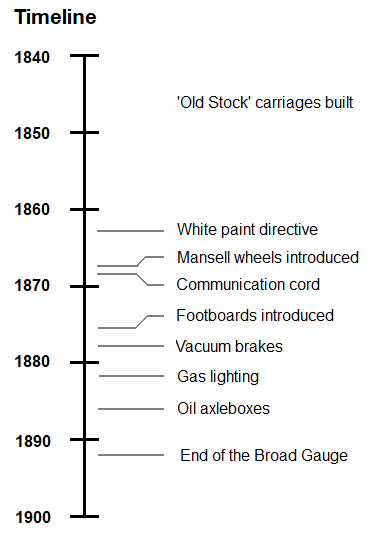
Technical developments during the Broad Gauge period |
Much more detail on my methods for constructing Broad Gauge models is set out in my blog on RMWeb.
© Mike Flemming 2021
|








